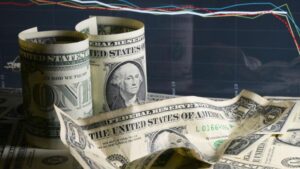
The U.S. dollar is getting cheaper against the euro, the pound sterling and the Japanese yen in trading Tuesday afternoon.
The ICE-calculated index showing the dollar’s dynamics against six currencies (euro, Swiss franc, yen, Canadian dollar, pound sterling and Swedish krona) lost 0.73% in trading, while the broader WSJ Dollar Index lost 0.64%.
The yen was up 3% against the dollar at 132.73 yen/$1 as of 2:10 p.m., compared with 136.91 yen/$1 at Monday’s market close.
The Japanese national currency was actively growing after the Bank of Japan unexpectedly decided to increase the borders of the band within which the yield of ten-year government bonds may fluctuate to plus/minus 0.5% from plus/minus 0.25% at the end of its regular meeting that ended on Tuesday.
According to the regulator, this decision will improve the stability of the existing monetary policy, but many economists took this step as laying the foundation for the exit from the ultra-soft monetary policy (MP), maintained for a long time, writes Bloomberg.
At the same time, the Bank of Japan left the main parameters of MP unchanged: the short-term interest rate on deposits of commercial banks in the Central Bank remained at minus 0.1% per annum, the target yield on ten-year government bonds – about zero. This coincided with the expectations of most analysts.
The euro/dollar pair is trading at $1.0635 compared to $1.0609 at the close of the previous session.
The pound has fallen in price to $1.2148 against $1.2145 at the close of trading on Monday.
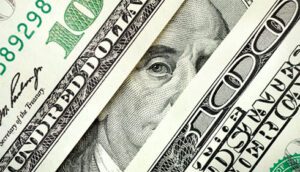
The U.S. dollar is getting cheaper against the euro, the yen and the pound sterling in trading on Monday.
The ICE-calculated index showing the dollar’s dynamics against six currencies (euro, Swiss franc, yen, Canadian dollar, pound sterling and Swedish krona) lost 0.12% in trading, while the broader WSJ Dollar Index lost 0.21%.
The euro/dollar pair is trading at $1.0606, up from $1.0587 at the close of the previous session. The pound rose to $1.2175 versus $1.2141 at the close of trading on Friday.
Traders continue to follow the statements of the representatives of the Federal Reserve System (FRS) and wait for the next statistical data on the American economy.
This week, the U.S. Commerce Department will release final data on the country’s GDP dynamics in the third quarter. Experts polled by Trading Economics do not expect to revise their estimate of GDP growth from the previously announced 2.9%.
Federal Reserve Bank of New York (FRB) President John Williams told Bloomberg on Friday that the U.S. central bank will raise rates as high as necessary to bring “stubbornly high” inflation under control.
According to Williams, for the Fed’s actions to be successful, the rate will have to exceed the U.S. inflation rate at some point. At the same time, he noted that he does not expect it to rise to 6% (the October rate of growth of the PCE consumer price index), but rather expects inflation to slow down.
Mary Daley, president of the San Francisco Fed, still believes that the Fed is a long way from meeting the goal of substantially lowering the rate of inflation in the U.S.
“We still have a long way to go,” Daley said at an American Enterprise Institute event Friday. – We’re a long way from our goal of achieving price stability.”
The yen rose Monday on a Kyodo report that the Japanese government and the country’s central bank may revise its approach to the inflation target, making it more flexible. Japanese authorities are currently aiming for a 2% inflation target “as soon as possible.”
A more flexible wording of the inflation target would pave the way for the Japanese central bank to tighten monetary policy, Bloomberg notes.
Kyodo report, however, was refuted by Japan’s Cabinet Secretary General Hirukazu Matsuno, who said there are no plans to change the government’s approach to inflation target. According to Matsuno, he hopes that the Bank of Japan will continue its policy moving toward the inflation target.
The Bank of Japan will hold a two-day meeting Dec. 19-20 to decide on key parameters of its policy in the near future.
The dollar-yen exchange rate fell to 136.09 yen from 136.7 yen at market close on Friday.
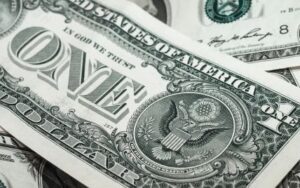
The U.S. dollar is falling against the euro, yen and pound in trading on Friday.
The euro/dollar pair is trading at $1.0647 as of 8:07 a.m. KSC on Friday, down from $1.0629 at the close of the previous session.
The pound is trading at $1.2204 by that time against $1.2179 the day before.
The cost of dollar in pair with the yen decreased to 137.25 yen, compared to 137.77 yen at the end of previous trades.
The ICE index showing the dollar’s movement against six currencies (euro, Swiss franc, yen, Canadian dollar, pound sterling and the Swedish krona) was losing 0.17%, while the broader WSJ Dollar Index lost 0.23%.
Traders continue to assess the outcome of meetings of the world’s major central banks.
The U.S. Federal Reserve (Fed) on Wednesday expectedly raised its key rate by 50 basis points, and central bank leaders revised upward their forecast for the rate level by the end of 2023. According to the new forecast, the rate will peak at 5-5.25%.
In addition, during the traditional press conference, Fed Chairman Jerome Powell repeatedly hinted that the Fed does not intend to proceed with rate cuts until at least early 2024.
On Thursday, the European Central Bank and the Bank of England followed suit and also raised their rates by 50bp.
Investors also analyze the statistical data published the day before from the USA that showed a bigger-than-expected decline of retail sales and an unexpected drop of industrial production in November.
U.S. retail sales in November decreased by 0.6% compared to the previous month, said the U.S. Department of Commerce. It’s the biggest drop since the beginning of the year, Trading Economics noted.
Analysts polled by Bloomberg had expected a decline of 0.2%, while Trading Economics had forecast a 0.1% decline.
Industrial production in the U.S. in November decreased by 0.2% compared with the previous month, while analysts had expected growth of 0.1%. In annual terms industrial production increased by 2.5%.
The statistical data that did not meet expectations increased fears that the Fed’s tight monetary policy could already begin to exert downward pressure on the economy, Trading Economics wrote.
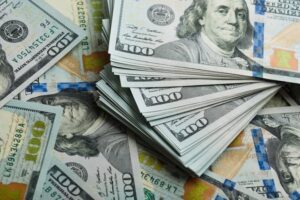
The U.S. dollar weakly appreciates against the euro and the pound sterling during the trading on Wednesday, continues to weaken in pair with the yen.
The day before the American currency plummeted in price following the release of the U.S. Labor Department data which showed a significant slowdown in inflation in the United States in November.
Last month consumer prices (CPI) rose by 7.1% year-on-year – the lowest since December 2021. The rate of inflation was down from 7.7% in October. Experts polled by Market Watch had on average expected a less significant slowdown to 7.3%.
The published statistics boosted investor hopes that the Federal Reserve (Fed) could halt the cycle of prime rate hikes sooner than previously expected.
The Fed concludes its two-day meeting on Wednesday. An overwhelming majority of experts expect the U.S. central bank to slow the pace of rate hikes in December after increasing it by 75 basis points (bps) at the end of the previous four meetings. The rate is expected to rise by 50 basis points to 4.25-4.5% at the December 13-14 meeting.
The euro/dollar pair traded at $1.0629 as of 8:00 a.m. Kk on Wednesday, compared to $1.0634 at the close of the previous session.
The pound exchange rate is $1.2257 by that time against $.2365 the day before.
The dollar fell to 135.44 yen against 135.59 yen at the previous trading session.
On Tuesday the American currency fell by 0.9% against the euro, by 0.8% against the pound and by 1.5% against the yen.
Meetings of the European Central Bank (ECB), the Bank of England as well as the Swiss and Norwegian central banks will also take place this week.
The European Central Bank, which meets on Thursday, may also slow the pace of key rate hikes to 50bp after increasing them by 75bp in October and September, experts expect.
The Bank of England, like the ECB, will hold a meeting on December 15. Analysts expect the British Central Bank, which raised its prime rate in November by 75 basis points. – maximum since 1989, will also decide to slow the rate increase to 50 bp.
EURO, pound, U.S. dollar, yen
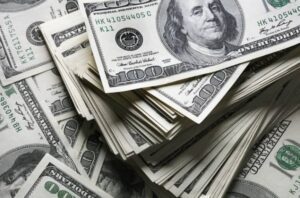
The US dollar is stable against the euro and the pound sterling in trading on Tuesday, strengthening slightly against the yen.
Traders this week are focusing on meetings of several major global central banks, including the Federal Reserve (Fed), the European Central Bank (ECB), the Bank of England and the Swiss and Norwegian central banks.
The vast majority of experts expect the U.S. Central Bank to slow the rate hike in December after increasing it by 75 basis points (bps) at the end of the previous four meetings. The rate is expected to be raised by 50 bps to 4.25-4.5% at the Dec. 13-14 meeting.
On Tuesday, the U.S. Department of Labor will release November data on the country’s consumer price dynamics, which will allow investors to make predictions about how high the Fed’s rate cap will be in the current hike cycle.
Experts, according to Trading Economics, on average expect the rate of inflation in the United States to slow to an annualized rate of 7.3 percent last month, down from 7.7 percent in October. Core inflation, which excludes food and energy prices, is expected to slow to 6.1% in November from 6.3%.
The inflation data are even more important than the Fed’s decision, said Xi Qiao, managing director of UBS Group AG’s Wealth Management unit.
“The future dynamics of the U.S. central bank rate will depend on the rate of inflation whether or not the Fed slows the rate hike on Wednesday,” Xi Qiao said on Bloomberg TV.
IG Australia experts expect the dollar to decline if Tuesday’s Labor Department report shows a slowdown in U.S. inflation to 7-7.2 percent.
The European Central Bank, which meets on Thursday, may also slow the pace of key rate hikes to 50 bps after raising them by 75 bps in October and September, experts expect.
The euro/dollar pair was trading at $1.0542 as of 7:45 a.m. Ksk on Tuesday, up from $1.0539 at the close of the previous session.
The pound exchange rate by that time is $1.2274 against $.2273 the day before.
The Bank of England, like the ECB, will hold a meeting on December 15. Experts expect the British Central Bank, which raised its benchmark rate by 75 basis points in November to the highest level since 1989, will also hold a meeting. – the most since 1989, will also decide to slow the pace of the increase to 50 bps.
“We believe most Bank of England policymakers view a 75bp rate hike as an emergency move rather than the new normal,” notes BNP Paribas economist Paul Hollingsworth.
The ICE-calculated index showing the dollar’s performance against six currencies (euro, Swiss franc, yen, Canadian dollar, pound sterling and Swedish krona) lost 0.12% on Tuesday, while the broader WSJ Dollar Index lost 0.03%.
The dollar-yen exchange rate rose to 137.71 yen in trading, up from 137.64 yen at the close of the previous session.

The U.S. dollar is moderately rising against the euro and Japanese yen in Tuesday’s trading, while the Australian dollar is rising on the outcome of the country’s central bank meeting.
The euro is trading at $1.0487 as of 7:50 a.m. Tuesday, up from $1.0493 at the close of the previous session.
The dollar traded up to 136.97 yen against the Japanese currency, compared to 136.79 yen at the close of the previous session.
The ICE index showing the trend of the dollar against six currencies (euro, Swiss franc, yen, Canadian dollar, British pound and Swedish krone) added 0.08%.
The pound fell to $1.2189 from $1.2192 at the close of trading on Monday.
The U.S. data published the day before, which bolstered the dollar, reinforced fears that the U.S. Federal Reserve (Fed) will need to raise interest rates for a longer period than expected, writes Trading Economics.
The U.S. Services Business Activity Index unexpectedly rose to 56.5 points in November from 54.4 points a month earlier, data from the U.S. Institute for Supply Management showed. The average forecast of analysts polled by Trading Economics had expected the index to fall to 53.3 points last month. A reading above 50 points showed an increase in business activity in the service sector, while a lower reading showed it was weakening.
The Australian dollar traded at $0.6727 on Tuesday, up from $0.6699 at the close of the previous session.
The Reserve Bank of Australia (RBA) on Tuesday raised its key interest rate by 25 basis points (bps) to 3.1 percent a year at the end of its final meeting of the year. This coincided with the forecast of most analysts, reports Trading Economics.
The Central Bank has raised the rate for the eighth time in a row. Thus, the cost of borrowing rose to its highest level since November 2012. At the same time, the RBA management signaled a further rate hike to curb inflation, which remains at a high level.
The euro traded at $1.0487 as of 7:50 a.m. Tuesday, up from $1.0493 at the close of the previous session.
The dollar traded up to 136.97 yen against the Japanese currency, up from 136.79 yen at the close of the previous session.
The ICE index showing the trend of the dollar against six currencies (euro, Swiss franc, yen, Canadian dollar, British pound and Swedish krone) is showing 0.08% growth, while the broader WSJ Dollar Index added 0.06%.
The pound fell to $1.2189 from $1.2192 at the close of trading on Monday.
The U.S. data published the day before, which bolstered the dollar, reinforced fears that the U.S. Federal Reserve (Fed) will need to raise interest rates for a longer period than expected, writes Trading Economics.
The U.S. Services Business Activity Index unexpectedly rose to 56.5 points in November from 54.4 points a month earlier, data from the U.S. Institute for Supply Management showed. The average forecast of analysts polled by Trading Economics had expected the index to fall to 53.3 points last month. A reading above 50 points showed an increase in business activity in the service sector, while a lower reading showed it was weakening.
The Australian dollar traded at $0.6727 on Tuesday, up from $0.6699 at the close of the previous session.
The Reserve Bank of Australia (RBA) on Tuesday raised its key interest rate by 25 basis points (bps) to 3.1 percent a year at the end of its final meeting of the year. This coincided with the forecast of most analysts, reports Trading Economics.
The Central Bank has raised the rate for the eighth time in a row. Thus, the cost of borrowing rose to its highest level since November 2012. At the same time, the RBA management signaled a further rate hike to curb inflation, which remains at a high level.